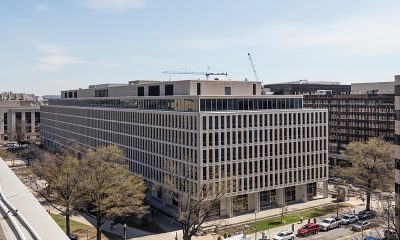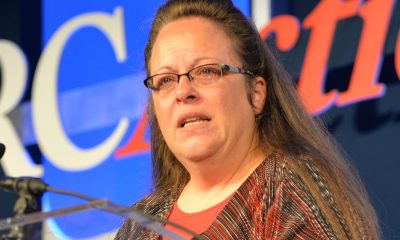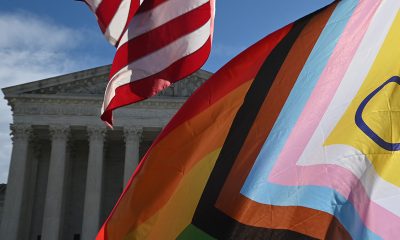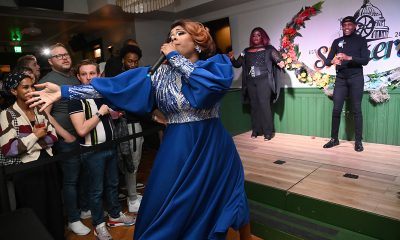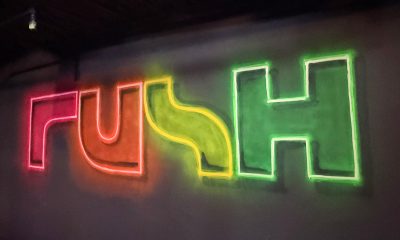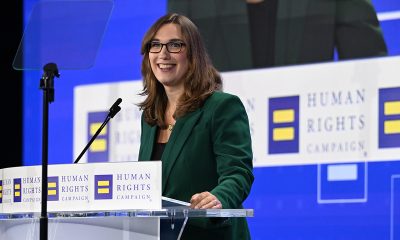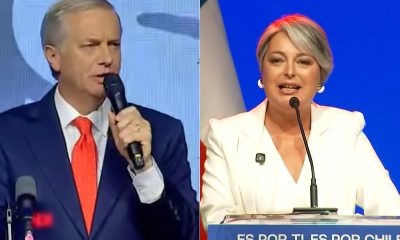Opinions
Activism, the black athlete and supporting LGBT equality
Ali’s legacy and why Kaepernick’s critics are wrong
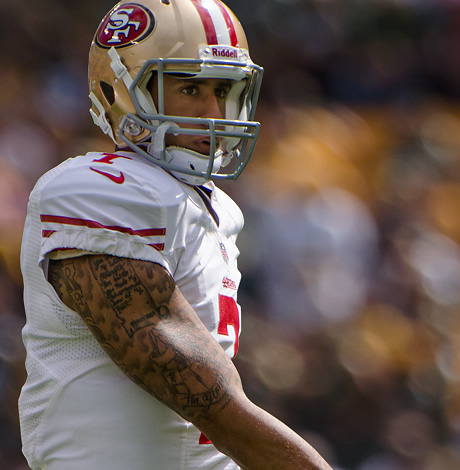
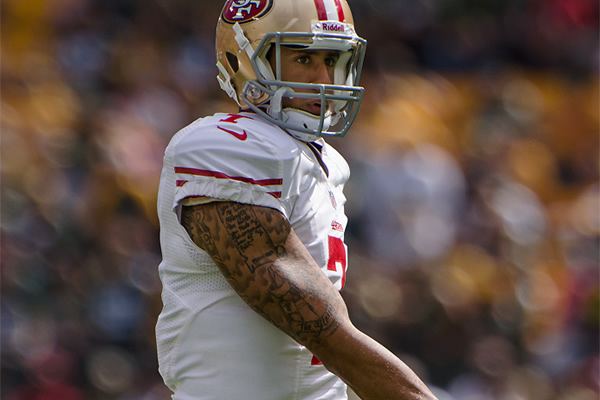
Why do we praise Muhammad Ali, yet criticize Colin Kaepernick? (Photo by Mike Morbeck; courtesy Flickr)
Why do so many African-American professional athletes today view Muhammad Ali as a hero, but fall short of even trying to live by the same code of ethics that made him a hero? Ali became a hero because he was never silent. He said things he knew would make people uncomfortable, even angry, but that he believed would help bring about awareness and change. Ali was, as a result, a controversial figure during his life. He angered countless people with his message and many people hated him. It was only later that Ali was recognized for his impact on our country.
I remember that once as a boy I heard Ali call himself “pretty” on TV. This was before Beyoncé made big booties sexy, before girls were pumping their lips full of fillers. This was the 1970s. “Black” features were not considered pretty. I remember how powerful it was to see a man who looked like me categorize himself that way. I was nine years old, and I have never forgotten that moment. It was a small moment, but one that empowered me to feel good about myself. That is the power we possess as professional athletes: We have a platform to speak, and a way to give voice to so many voices that remain unheard. We have the ability, and I believe, the responsibility, to serve as a voice that will empower and engage others. But that platform, and the power it gives us, is an opportunity too many of us ignore.
When I started writing this piece, my intention was to draw attention to Black athletes who admire Ali for his activism, but remain silent as injustices continue to reveal the persistent inequity in this country. More specifically, I wanted to center that discussion on the fact that African-American heterosexual males have remained noticeably absent in the fight for equal rights for the LGBTQ community, being that we are all too familiar with what it feels like to be a disenfranchised and discriminated against minority. Before I finished the piece, however, I saw San Francisco 49ers quarterback Colin Kaepernick sit down for the national anthem — and I saw America stand up in protest. When asked why he didn’t stand, Kaepernick said he was “not going to stand up to show pride in a flag for a country that oppresses Black people and people of color.”
The way Kaepernick took a stand was exactly the type of activism I wanted to see among today’s Black athletes, but before I had time to applaud him, the media crucified him. Worse yet, it wasn’t just the mainstream media that was speaking out. Even fellow Black athletes were speaking out against him. It was bad enough that so many Black athletes were willing to be silent and let others stand up for our people, but now some were actually chastising him for standing up for us. Kaepernick wanted dialogue, but instead he got told that he had crossed a line. He wanted to spark conversation, but instead he was told to be quiet. In fact, he was told to be grateful.
Ironically, one of the criticisms of Kaepernick came in the form of an argument that Kaepernick was not in a position to stand up for Black people because he was not Black. Forgetting about the fact that Kaepernick is in fact half Black, that position itself is nonsensical. If he were white, would it be wrong for him to stand up for Black people? Does that mean that white people cannot defend the rights of Blacks or other minority groups? That straight people cannot defend the rights of the LGBTQ community? Historically, no minority group has ever gained the equal rights they sought without the support of the majority.
And it’s true that Kaepernick does not necessarily feel the impact of racism or injustice day to day ⎯ he is not part of the disenfranchised Black community he is fighting to protect. The Civil Rights leaders of the 1950s, such as Martin Luther King Jr. and Malcolm X, were standing up for their own rights along with the rights of the Black community ⎯ King couldn’t sit at the front of the bus either. Kaepernick is educated, and has a multi-million dollar contract as a quarterback in the NFL. But in my mind that makes his action even more powerful, not less. His silent protest was not driven by self-interest. He chose to speak for those who don’t have a voice. As he put it, “This country stands for freedom, liberty, justice for all ⎯ and it’s not happening for all right now.” That was reason enough for him to take action, despite any repercussion he might face. That is what makes him a leader.
So why are so few athletes willing to stand up — or, in Kaepernick’s case, sit down? Many people do not realize that if a player has made it to the NFL, he has been playing since he was a child. From that time, he has been systematically trained to aspire to be in the NFL. Once a player makes it to the league, his impulse is, one, to fall in line, to do nothing that might jeopardize his team, a sacred brotherhood. Two, not to do anything to jeopardize his salary or endorsements. More than half of the players in the NFL come from poverty. For more than half the players in the league, football is the only way they see to take care of themselves and their families.
But the impulse and pressure to fall in line is what keeps so many players from standing up the way Kaepernick has — and keeps so many players silent when they could be voices of change. The unfortunate truth is that their fears are not unfounded. Broncos linebacker Brandon Marshall, who has chosen to take a knee for the anthem in light of Kaepernick’s protest, has already lost two endorsements as a result of his actions. While too many of us still sit on the sidelines in the fight for justice, I am heartened that Kaepernick’s activism has begun to gain momentum: more athletes take a knee, raise their firsts, link arms in support of him and his message. Even 49ers owner Jed York came out in full support of Kaepernick. Despite sacrificing two endorsements, Marshall remains steadfast in his commitment to the protest, and the conversation he hopes it will inspire.
I would love to see this momentum continue to build and have more professional Black athletes stand up publically for the larger Black community. But what I would also love to see is that activism stretch beyond the reach of our own people and begin to try to help yet another marginalized group, the LGBTQ community.
There is an unmistakable power balance in this country, and we all know who wields that power. That being said, within the other groups that comprise our nation, there does exist a hierarchy of power. That hierarchy is what gave Kaepernick the opportunity to stand up for his beliefs in a way that a lot of other Black men never could. It is also what allowed the entire football team and the entire student body at University of Missouri to stand up for Michael Sam, and allow him to live his life openly as a gay man (which, by the way allowed him to play the best season of his entire collegiate career). And, two years later allowed the Missouri football team to stand together as a team against the racial discrimination that was occurring on their campus and boycott playing a single game until they got a public apology from the president of the university. Regardless of our race, as athletes, we do in fact wield power. The power to raise our voices for change is in our hands, but I see so much silence.
The LGBTQ community is another minority community in our country that is still fighting to be truly equal under the laws of our nation. And while I am by no means saying that the Black fight for equality is over, what I am saying is that there are many Black people in this country, such as professional athletes, that do in fact have a tremendous platform with which they can show support for the LBGTQ community. We have power to not only help ourselves, but to help another group who seeks fairness and equity.
If more professional athletes stood up for the LGBTQ community the same way Muhammad Ali and Colin Kaepernick did and the way others are beginning to do, think of the impact and the power that would have on the LGBTQ community and their fight for equality. Think about what would happen if two of my favorite athletes ⎯ Michael Jordan and LeBron James — went to Nike and said they wanted to film a PSA because they had a family member or close friend who is gay and wanted to publicly show their support. Because let’s face it, we all have at least one family member or close friend that is a part of the LGBTQ community. But instead we allow ourselves to be told by the corporations what we can and cannot do. Why can’t we realize that we have just as much if not more power than the students at University of Missouri? If we stand together on the right side of history, then the power is ours. We need to be on the front line of history, not wait until it is cool to be in support of something that is not allowing friends and family members to feel safe and live their life to fullest.
In our community there is still a widespread fear that being an advocate for, or even just an ally of the LGBTQ community will call into question our own sexuality or masculinity as straight Black men. The base level of this fear is straight forward (albeit based on a false assumption) that supporting the LGBTQ community will lead people to think that we are gay or less of a man. As a result, many of us would rather say nothing than do something that would lead others to have that perception of us. There is also a financial fear associated with being a straight ally. That fear being that if people think that we are homosexual or an ally to the LGBTQ community, it will have a detrimental effect our brand, and in turn, our wallet.
I also want to address the argument that religious people cannot support the LGBTQ community due to the teachings of the Bible. First of all, I would like to remind all of my Black brothers and sisters that it was not too long ago that people used verses from the Bible to back up arguments to keep slavery legal. We, as African Americans cannot in good faith use the same teachings that were used to oppress us to suppress the rights of another group of people. Second, I would love someone to tell me when the laws in the Bible got ranked. In other words, what divine power came down and told us that the teachings that prohibit homosexuality are more important than the teachings that tell us to “love your neighbor as yourself?”
We must begin to the dispel the ideas held by so many straight Black men that being an ally to the LGBTQ community will hurt them in some way. In order to do this, there are two major revelations to which these athletes must come. The first is that the stereotypes they grew up hearing are antiquated and untrue. We must all be a part of eliminating these stereotypes, and we can do that simply by letting our words and our actions defy them. The second is that becoming a straight ally for the LGBTQ community will actually broaden their brand and appeal. The LGBTQ community accounts for more than $9 billion of buying power in this country. When Michael Sam came out as a gay man, his jersey shot straight to the No. 2 most purchased NFL jersey in the country. When Steve Jobs died, Tim Cook took over as CEO of Apple, and has subsequently come out as a gay man. We all still walk around with our iPhones tight in our clutches, but how many of us stop to think about the fact that the company that makes them — one of the most powerful companies in the country — is run by an openly gay man?
Muhammad Ali has, in the wake of his death, been mourned and celebrated in the media as an athlete who transcended sport and became an icon of activism and social justice. However, the same people who praise Ali for his activism and commitment to social justice can, almost in the same breath, condemn Colin Kaepernick for attempting to use his platform as an athlete to do the same. Ali paved the way for athletes like Kaepernick to speak out. If we celebrate Ali for creating the path, then how can we disapprove of athletes like Kaepernick for walking it?
It is time Black athletes realize our power and responsibility to bring change in America — and it is time for America to stop fearing what the change will look like. We must say and do the things that will spark conversation about important issues that we face because conversation is the first step toward resolution.
If we cannot speak about the issues, how can we hope to resolve them? More specifically, we, as heterosexual Black men with a voice need to get on the right side of history in the fight for LGBTQ equality. It is our responsibility to stand up for the underdog, the discriminated against, because we have been and still are discriminated against. We must stand up for communities other than our own just as we want others to stand up for us. We must be upstanders and not bystanders, we must stand up and use our voice for change, acknowledging that no group of human beings deserves to be treated as inferior.
We must applaud Kaeperrnick for his actions by acknowledging that great leaders have the strength and conviction to never mistake the easy choice for the right one. But applauding him is not enough. We must accept that once we identify a great leader such as him, we must have enough of our own strength and conviction to follow him.
Sean James is executive director of Sports & Entertainment for Hotaling Group Insurance Services and a former NFL player.
Opinions
MTG should keep up the pressure on Trump, MAGA
Unexpected flip a welcome sign of GOP resistance
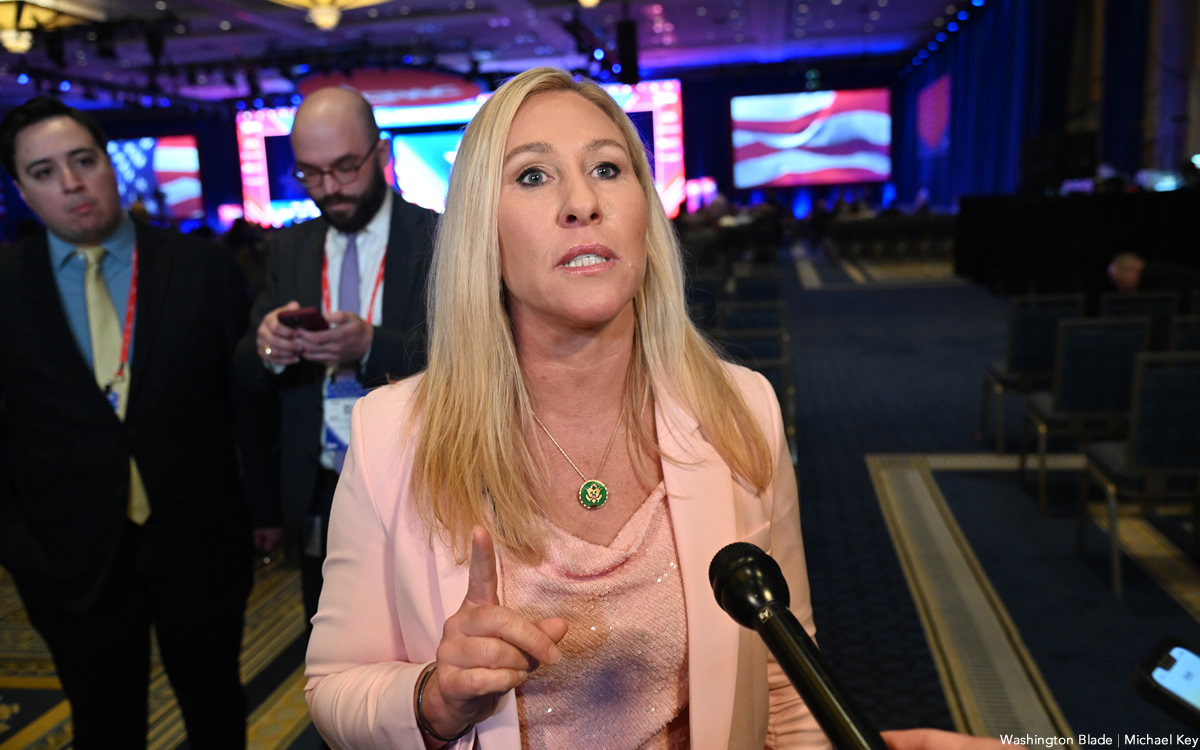
If the first time you ever saw, or heard, Rep. Marjorie Taylor Greene (R-Ga.), was when she appeared on “The View,” you could be forgiven if you thought what an intelligent, rational, woman she is. If it wasn’t the first time you saw her, you just wondered what happened to the wacko you thought you knew.
Marjorie Taylor Greene has stood up for the women who were the victims of Jeffrey Epstein and his friends. She was one of the 218 who signed on to bring the bill to release the files to a vote in the House. I think the vote will be more lopsided than people think, getting many more Republicans. After it passes the House, it will go to the Senate, and if it passes there, to the felon, for him to decide — will he sign it or veto it?
Greene has also spoken out and criticized the Republican Party for not agreeing to extend the tax credits for the ACA, to ensure the cost of insurance premiums remain at least affordable for most. Again, we all had to wonder what happened to the real MTG, the non-repentant Trumper. This version of Greene has driven the president to an apoplectic state. He has given her a new nickname, and accused her of betraying the entire Republican Party. These are quotes from Trump on social media last Saturday: He called her the “Lightweight Congresswoman Marjorie Taylor Brown (Green grass turns brown when it begins to ROT!),” based on what she said. He accused her of turning left, and according to him “performed poorly on the pathetic View, and became the RINO that we all know she always was. Just another fake politician, no different than Rand Paul Jr. (Thomas Massie), who got caught being a full-fledged Republican In Name Only (RINO)! MAKE AMERICA GREAT AGAIN!!!.”
Although I support what Greene is saying on these two issues we shouldn’t forget Greene is the woman who said, “joining the military is “ like throwing your life away” while discussing the U.S. withdrawal from Afghanistan on Fox News. She also said regarding two July 4th incidents in which seven people were fatally shot at an Independence Day parade in Highland Park, Illinois, and two police officers were gunned down in Philadelphia, “Two shootings on July 4: One in a rich white neighborhood and the other at a fireworks display. It almost sounds like it’s designed to persuade Republicans to go along with more gun control.” Then when talking about the Jan. 6, 2021, attack on the Capitol, in which hundreds of Trump supporters stormed the building to stop certification of the presidential election results, she called it “a little riot.” Very bizarre. We are all definitely living in Trump’s alternate universe.
I think the thing that bothers the felon the most is Greene’s insistence the Epstein files be released. It is interesting there is nothing yet public that implicates Trump in actively participating in any pedophilia with Epstein. Some of the released emails do implicate him in knowing what Epstein was doing, but not speaking out about it. But what is making the felon in the White House apparently hysterical, and fighting so hard, to keep the Epstein files from the public? What does he know is in them, that we don’t? He has tried every distraction to move this off the front-page including bombing Venezuelan ships he claims are carrying drugs, without any proof, and threatening a land war against Venezuela. Since that hasn’t worked, he is having his AG, his lapdog, Pam Bondi, have a prosecutor look at only what Democrats could be involved in the Epstein scandal, clearly hoping if there is an active investigation it could keep the files away from the public, possibly for years.
Because of the recent election results, the felon is backtracking on the tariffs he said were so important, and a huge positive, for the United States. Those results clearly showed the people are blaming him, and the Republican Party, for the rising prices. Even to a clueless, evil, human being like him, it has become clear the tariffs are making life worse for the American people.
So, I say to Marjorie Taylor Greene: Stay this new course you are on. Keep up the work attacking the felon, and Republicans who are going along with him. Know that even those of us who think you are a wacko, thank you.
Peter Rosenstein is a longtime LGBTQ rights and Democratic Party activist.
Opinions
Community must honor all trans people on Transgender Day of Remembrance
Trans people more likely to be disabled, face bias within medical systems.
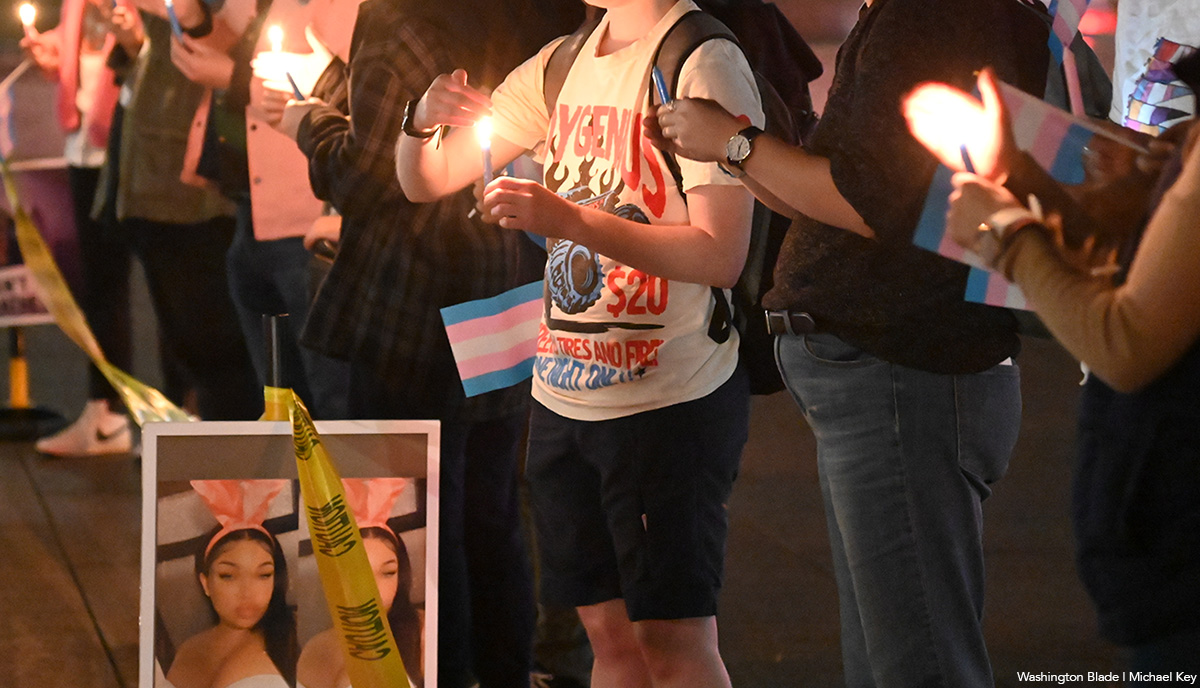
Our community has let marginalized people down. That’s the simple truth we need to hold on this Transgender Day of Remembrance. And, believe me, I don’t say this to accuse anyone. But marginalized trans people — including BIPOC, disabled and neurodivergent people, refugees and asylum seekers — are disproportionately affected by transphobic violence that too often goes unchecked, unreported, and unchallenged. And the wider LGBTQ community hasn’t done nearly enough to change this.
From the very beginning, Transgender Day of Remembrance was about marginalized trans lives.
In 1999, transgender activists Gwendolyn Ann Smith, Nancy Nangeroni, and Jahaira DeAlto founded TDoR a year after the killing of Rita Hester, a Black trans woman, to honor her memory and the memory of all trans people lost to hate-motivated violence. Hester was openly trans, courageous, and ready to speak up against transphobia. Her death was noticed, but not all marginalized trans people are so lucky.
Now, as I prepare a speech for my city’s TDoR vigil — a speech about intersectionality, because I’m a trans, autistic, ADHDer refugee from a mixed background — I’m not even sure where to begin. You could write entire books and academic studies, hundreds of pages, about why and how marginalized trans people are under attack. But none of that fully captures how deeply normalized these risks have become in our daily lives.
We trans people living at multiple intersections have become targets of jokes about the “woke agenda.” If characters like us appear in mass culture, countless people try to convince the world that we can’t be real. When a celebrity like us exists, they’re treated as a curiosity. And meanwhile, the very real violence against people like us goes unnoticed.
It is known that trans adults are more likely to be disabled than cisgender adults, in part because of the failures and biases within medical systems. We also know there is a significant overlap between trans identity and autism for reasons we don’t yet fully understand. But what we do understand is this: disabled trans people and autistic trans people are often denied autonomy, recognition, and basic respect. Worse, we face a bigger risk of violence and hate crime.
And in the context of the modern U.S., this danger is multiplied.
The country is experiencing the largest coordinated wave of anti-trans legislation in its history: hundreds of bills targeting every aspect of trans existence, from healthcare to public spaces. At the same time, the immigration system has become increasingly hostile. When the government targets both trans communities and refugees, trans refugees end up trapped in the gap between two systems that refuse to take responsibility for protecting them.
For many trans refugees, especially autistic and disabled ones, the greatest danger starts not when they are deported, but the moment they enter the U.S. immigration system. U.S. Immigration and Customs Enforcement detention is notoriously unsafe for trans people, particularly trans women who are often placed in men’s facilities, denied hormones, subjected to harassment, or put in solitary confinement under the excuse of “protection.” ICE excluded trans statistics from its public reports, trying to erase trans people on a systematic level, to make this discrimination invisible.
For autistic trans women, the sensory overload of detention — the noise, the lights, the shouting, the unpredictability — can be unbearable. ICE facilities almost never have staff trained in autism, mental health, disability communication, or even basic general and cultural competency. Many autistic trans refugees simply cannot navigate complaint procedures, medical requests, or legal paperwork without support that does not exist inside the system.
The problems don’t stop after release.
The U.S. asylum process demands documentation and formal proof of persecution that many refugees, especially autistic people, people with mental health issues or learning disabilities simply do not have. The violence they experience is often undocumented precisely because they were trans, because they were autistic, or because the police in their countries refused to recognize them. Immigration judges frequently misinterpret autistic communication as “inconsistency,” or dismiss their stories because they express trauma differently. For Black and brown trans refugees, the credibility gap is even wider.
And where are they supposed to turn for help? To refugee organizations that often have no training in trans issues, no understanding of gender-affirming care, and no knowledge of hate-crime risks? Or to LGBTQ groups, which may be strong advocates but rarely have immigration lawyers, disability-trained staff, autistic-friendly politics or experience dealing with ICE? What does a trans refugee woman do if she is also autistic and struggles with bureaucracy, communication, or social interactions? Who takes her seriously? Where does she go to report violence when the police misgender her, the immigration office overlooks her, and the community organizations don’t have the tools to protect her?
Let’s not forget that autistic people are also under attack in the current American political climate.
Disability rights — including the right to live independently, the right to healthcare, and the right to refuse institutionalization — are being eroded. Studies suggest that up to 90 percent of autistic women experience some form of abuse or violence in their lifetimes. Can you imagine the data for trans women? Or men, or nonbinary people? Combine that with transphobia, racism, xenophobia, and the fragility of the asylum system, and you create a situation where a trans autistic refugee is left almost completely unprotected.
As a trans autistic person who has worked with trans communities, autistic communities, and refugees for over 11 years, I can say with absolute clarity: you cannot separate one form of discrimination from another. Institutions don’t know how to handle cases at the intersection. Even in the best-case scenarios, in the “best” countries, police, and social services struggle to understand the needs of someone who is trans, autistic, disabled or mentally ill, racialized, and displaced. From Ukraine to Russia, from the UK to the U.S. — in every place I have lived or worked — LGBTQ organizations still lack a proper strategy for protecting trans people who live at these intersections.
And until we confront this honestly, until we build structures that acknowledge the reality of those who are hit hardest, Transgender Day of Remembrance will continue to mourn the same people we keep failing to protect. Or worse, the death of the most vulnerable victims of transphobia would still go unnoticed and undocumented.
Commentary
Miss Major Griffin-Gracy paved the way for today’s transgender rights revolution
The annual Transgender Day of Remembrance is Nov. 20

I’ll never forget the moment Miss Major Griffin-Gracy looked me in the eye and said, “Baby, you can’t wait for permission to exist. You take up space because you deserve to be here.” It was 2016, and I had just finished interviewing her at Northeastern University. What began as a professional encounter became something far deeper. She welcomed me into her chosen family with the fierce love that defined her life’s work.
That advice didn’t just change my perspective; it changed my life. Miss Major had an extraordinary ability to see potential in people before they saw it themselves. She offered guidance that gave permission to dream bigger, fight harder, and live unapologetically in a world that often told transgender people we didn’t belong.
Today, as we reflect on her legacy, we must remember that Miss Major didn’t simply join the transgender rights movement. She helped create it. Her activism laid the foundation for every victory we celebrate today and continues to shape how we fight for justice, dignity, and equality.
To understand her impact, we return to June 28, 1969, when a 27-year-old Black transgender woman stood her ground at the Stonewall Inn. While history often overlooks the transgender women of color at the heart of that uprising, Miss Major was there, refusing to back down when police raided the bar that night.
After Stonewall, she dedicated her life to building what became the infrastructure of liberation. When she fought that night, she wasn’t only resisting police brutality, she was declaring that transgender people, especially Black trans women, would no longer be invisible. Her message was simple: We exist. We matter. We’re not going anywhere.
Miss Major coupled courage with care. She knew that real change required systems of support. While many focused on changing laws, she focused on changing lives. Her work with incarcerated transgender women stands as one of her most powerful legacies. She visited prisons, wrote letters, sent commissary money, and made sure these women knew they weren’t forgotten. It wasn’t glamorous work, but it was transformative.
She built a model of organizing rooted in love and mutual aid communities supporting each other while demanding structural change. That approach became the blueprint for today’s transgender rights organizations, especially those centering Black trans women.
In a time when invisibility was often the safest choice, Miss Major chose visibility. She shared her story again and again, using her own life as proof of transgender resilience and humanity. Her openness created connection and understanding. People who heard her speak couldn’t ignore the truth of our existence or the strength it takes to live authentically.
Miss Major also believed leadership meant creating space for others. After our first meeting, she connected me with other activists, shared resources, and reminded me that my voice mattered. Talk to any transgender activist who came up in the last two decades, and you’ll hear a similar story. She saw something in others and nurtured it until it bloomed.
Her fingerprints are everywhere in today’s movement: in grassroots organizing, in the centering of the most marginalized voices, and in the insistence that liberation must be rooted in love and community. The victories we see (from healthcare access to broader public recognition) are built on the foundation she laid.
In one of our last conversations, Miss Major told me, “This movement isn’t about me. It’s about all of us. And it’s about the ones who come after us.” Her life reminds us that movements are sustained by love as much as protest, by the daily act of showing up for one another as much as by the marches and rallies.
As anti-trans violence rises and our rights face relentless attacks, we need Miss Major’s example more than ever. We need her fierce love, her unwavering defiance, and her belief that we deserve to take up space. Her legacy reminds us that the fight for our lives is also the fight for our joy.
This Transgender Day of Remembrance, we honor those we’ve lost and celebrate those who dared to live fully, people like Miss Major, who taught us that remembrance must come with responsibility. Her life calls us to protect one another, to build systems of care, and to keep fighting for a world where every trans person can live safely and proudly.
The mother of our movement may be gone, but the family she built lives on. The best way to honor her is to continue her work: to build, to protect, to love without limits, and to remind every trans person that they belong, they matter, and they are loved.
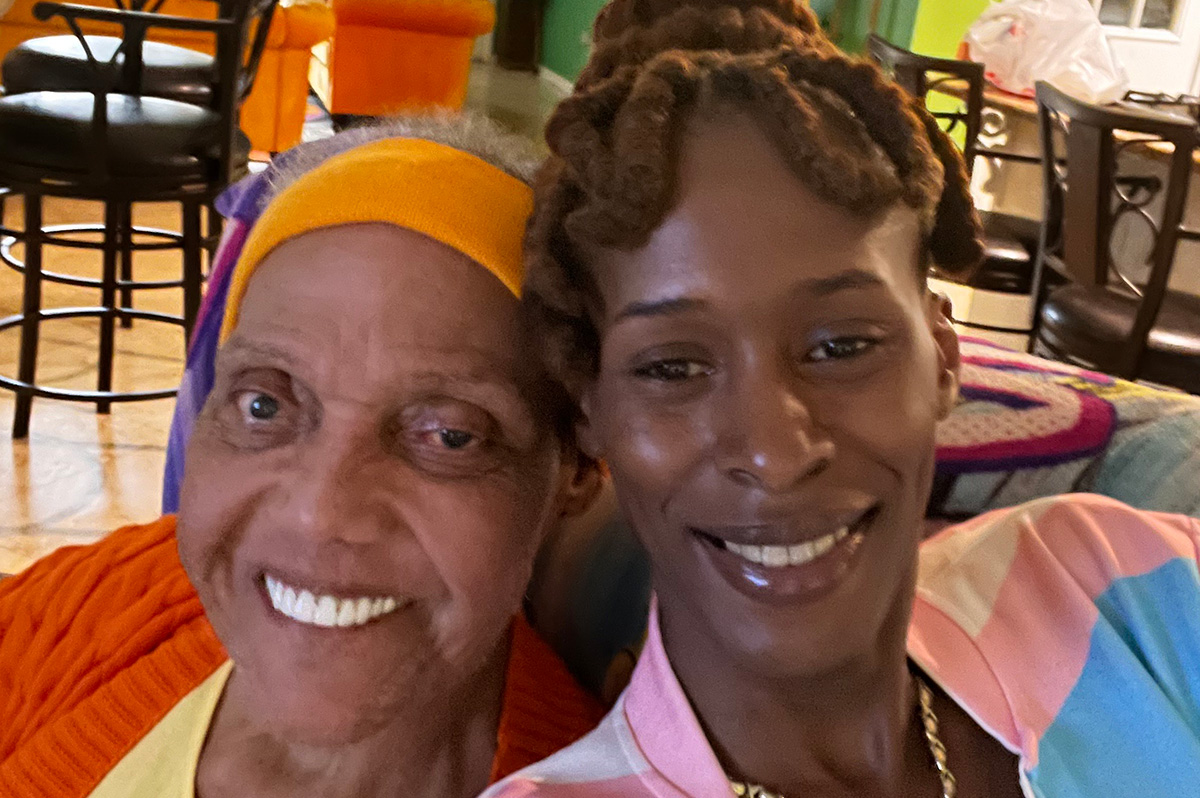
Chastity Bowick is an award-winning activist, civil rights leader, and transgender health advocate who has dedicated her career to empowering transgender and gender-nonconforming communities. She led the Transgender Emergency Fund of Massachusetts for seven years, opening New England’s first trans transitional home, and now heads Chastity’s Consulting & Talent Group, LLC. In 2025, she became Interim Executive Director of the Marsha P. Johnson Institute, continuing her mission to advance equity, safety, and opportunity for trans people. Her leadership has earned her numerous honors recognizing her impact on social justice and community care.
-

 District of Columbia2 days ago
District of Columbia2 days agoD.C. LGBTQ bars ‘hanging in there’ amid tough economy
-

 District of Columbia13 hours ago
District of Columbia13 hours agoNew LGBTQ bar Rush set to debut this weekend
-

 National2 days ago
National2 days ago213 House members ask Speaker Johnson to condemn anti-trans rhetoric
-

 Chile3 days ago
Chile3 days agoChilean presidential election outcome to determine future of LGBTQ rights in country

